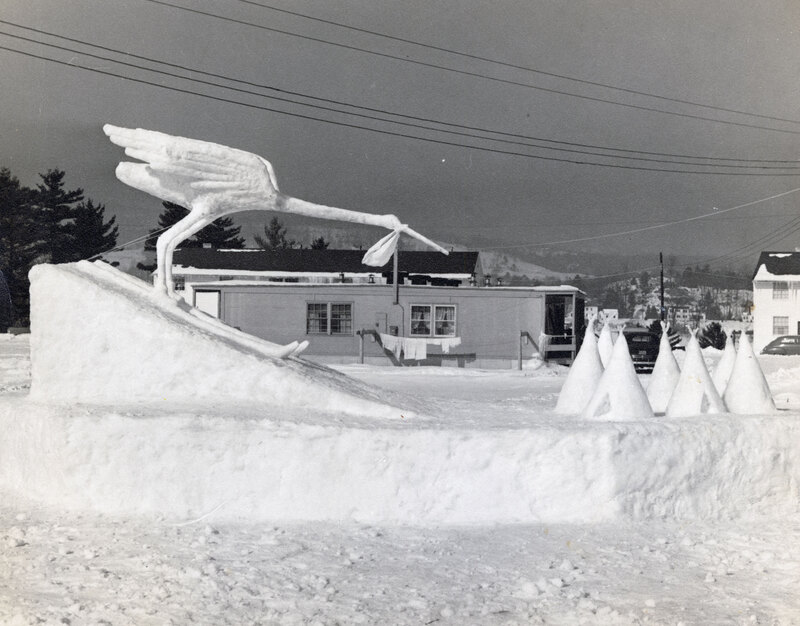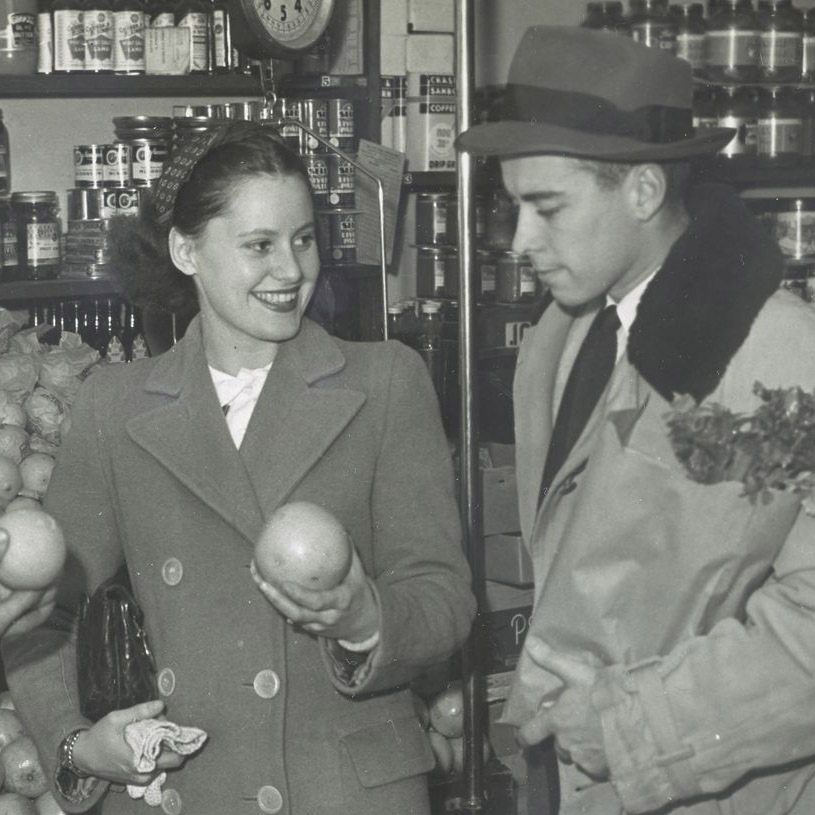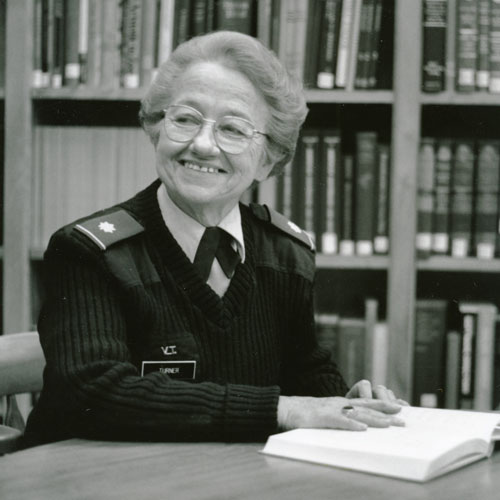Female Breadwinners on Campus
Based on the twenty-two oral history interviews with wives of Dartmouth veterans in The War Years Oral History Project, it is clear that the wage labor of Dartmouth wives was highly visible both in Hanover and at the College. They were clerks on Main Street, they babysat faculty children, and they waitressed at the Hanover Inn. They worked in the campus libraries, the Council on Student Organizations (COSO), the Dartmouth Athletic Ticket Office, Alumni Gym, Dick’s House, and more. Socially, wives went on Dartmouth Outing Club hikes, acted in theater productions, and chaperoned fraternity parties with their husbands. Joan Barradale, the wife of Eric Barradale ’44, even took woodworking lessons.
Most of these women lived in the dorms for married students: Sachem Village, Wigwam Circle, and Middle and South Fayerweather Halls. Overall, there were 273 families residing in these dorms, and 30 percent had at least one child. According to Ann Turner, wife of George Turner ’47, the students even built a snow sculpture of a stork in front of Wigwam Circle. When it collapsed, they put a sign on it that said “overworked.”
Tuck Business School students Thomas J. Murray and Leonard E. Morrissey brought these statistics to light when they co-authored “A Study of the Average Monthly Income and Expenditures of Married Dartmouth Students Residing in Sachem Village, Wigwam Circle, Middle and South Fayerweather Halls October 1946- April 1947.” Murray came to Dartmouth as part of the U.S. Naval Training Unit (V-12) program, and both men would have been immersed in this new campus culture of veterans and their wives.
The study surveyed a sample of married students in each housing center and found that most husbands opted not work and instead relied on their wives and the Servicemen's Readjustment Act of 1944, also known as the G.I. Bill, the latter of which accounted for about 43 percent of monthly income in families without children. Wives in these families without children made up about 40 percent of the population of wives and contributed on average 21.5 percent of the monthly income. While some wives without children did not work, the wives in families with children did not work at all. Husbands seemed to work at about the same rate (around three percent) regardless of if they had children. Although women were the primary earners in families without children, men viewed their G.I. Bill stipends as wage income in an effort to minimize the wives’ contributions:
The G.I. Bill is still the most important source of income for these students and in being so negates the fear of many masculine members on our campus that the fairer sex is here to stay–one way or another.
Thomas J. Murray & Leonard E. Morrissey
This line suggests that the Dartmouth community (or, better, Dartmouth men) saw women operating as their family’s primary earners as a threat. Generally, Dartmouth men also convinced themselves that women entering the workforce was a temporary situation and not something that would or should change gender dynamics on campus. Murray and Morrissey do properly acknowledge the wives’ contributions in the following paragraph: “A good word must be said for the wives of Dartmouth men.” The professor grading this paper seemed to agree with their assessment, as he gave them an A.
There were still a number of Dartmouth men that drew pride from their wives working instead of viewing it as a threat. Virginia Barnes, the wife of Swift C. Barnes, Jr. ’42, worked in a war supplies factory during the war and in a Hanover dress shop by day and at Tuck Library by night after coming to Dartmouth. In her oral history interview, Barnes agreed she was the “breadwinner,” and her husband admiringly called her “Rosie the Riveter.” He later pulled out a photo, saying: “See, I’ve got a big picture of Ginny at the desk in the library.”
From the Archives
Click on an image to access the full document, audio-visual components, and/or metadata associated with that item.
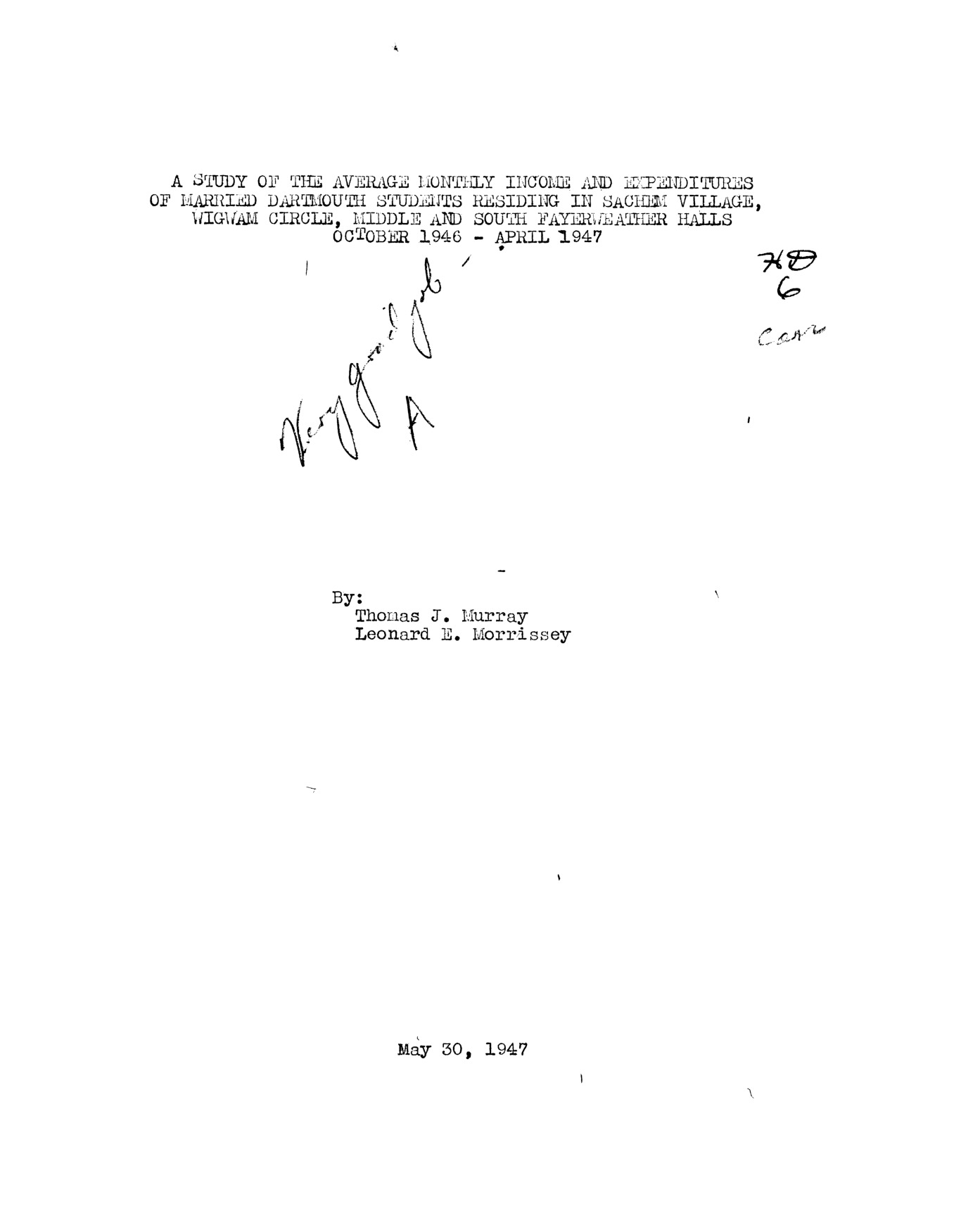
This paper provides figures about married Dartmouth student income and expenses, which the authors break down into categories, including the contribution of student wives.
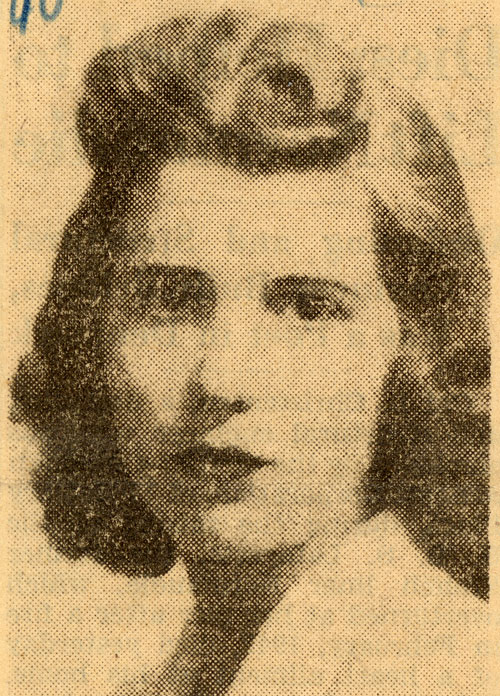
In this interview, Carol Allen discusses her discomfort from moving to Hanover without her husband and not finding a female community. However, she later discusses how life in married student housing was happy and more social.

In this interview, Joan Barradale discusses her time working at the gym and how married student life was confined to your immediate neighbors in the dorms.
 Historical Accountability Student Research Program
Historical Accountability Student Research Program
